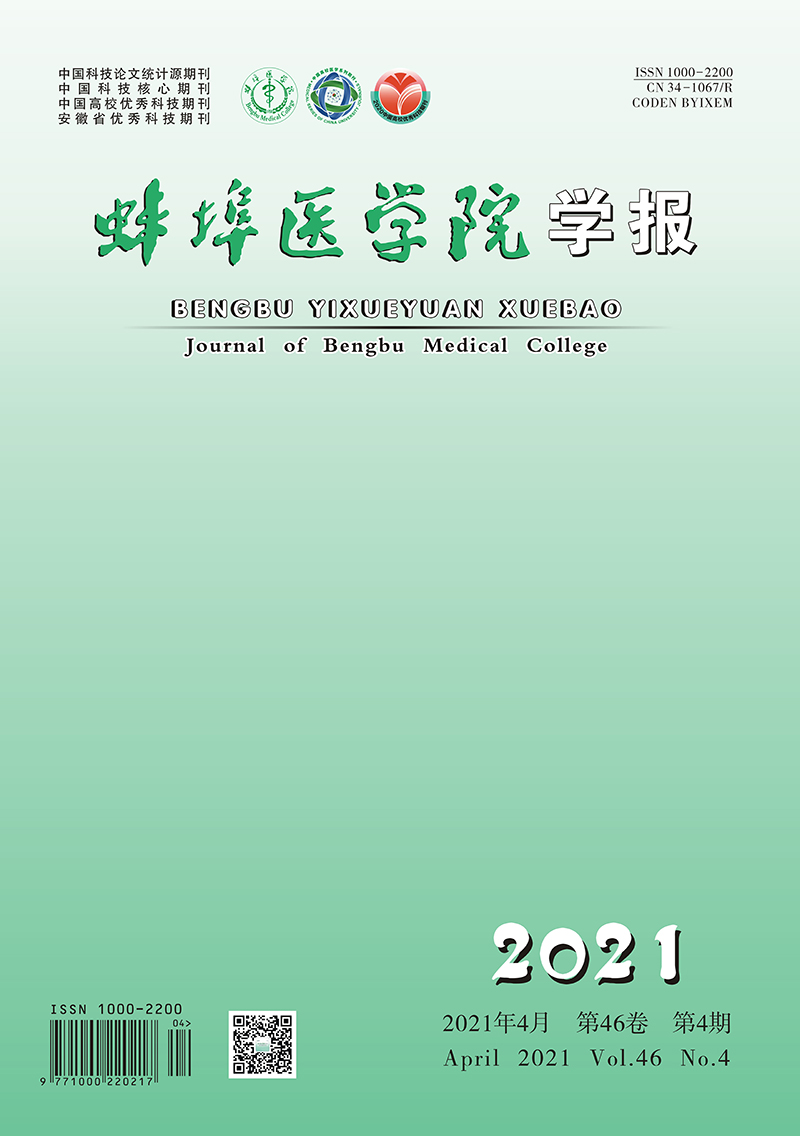-
肝恶性肿瘤包括原发性肝癌和转移性肝癌[1],热消融技术因创伤小、安全性高、定位准确等优点成为目前临床非手术治疗肝癌常用的方法之一。已有相关指南建议对3 cm或更小的肝脏恶性肿瘤进行射频消融(RFA)[2-4]。然而,局部消融治疗难以确保单次治疗后肿瘤病变完全坏死。文献[5]报道肝癌局部消融后局部肿瘤进展(local tumor progression,LTP)的发生率较高,可达5.7%~39.0%,是影响局部消融效果的主要因素之一。肝脏RFA后与LTP相关的独立预测因子包括消融边缘不足、肿瘤大小、包膜下位置和血管接近度、肿瘤类型、高血清透明质酸和肝炎病毒载量。微波消融(MWA)已经在肝癌治疗中取得了成熟的发展[6-7]。具有内部冷循环系统的消融针可以实现更大的消融区域,这将MWA指征从 < 3 cm的病灶扩展到5 cm及更大的病灶[8]。此外,与RFA相比,MWA显示出更高的热效率[9]。与RFA后相比,这些特征可能导致肝脏MWA后不同LTP发生率和危险因素的潜在可能性。我们的研究目的是分析MWA治疗肝癌后局影响肿瘤进展的危险因素,对改善疗效有重要的临床意义。
HTML
-
以我院2014-2016年采用MWA治疗的肝恶性肿瘤病人73例为研究对象,对病人的临床资料和术后随访影像学检查资料进行回顾性分析。所有病人经甲胎蛋白结合MRI或CT增强扫描确诊,部分病人经穿刺病理确诊。73例病人中原发性肝癌52例,转移性肝癌21例;男48例,女25例;年龄24~83岁;肿瘤直径为0.5~5.0 cm。MWA的纳入标准如下:(1)肿瘤少于3个,单个肿瘤直径 < 5 cm;(2)无门静脉血栓形成或肝外转移;(3)肝功能Child-Pugh A或B级;(4) 病人不愿手术治疗。
-
MTC-3C型微波消融治疗仪(南京维京九洲医疗器械研发中心),发射频率2 450 MHz,输出功率5~120 W,逐步可调,步进5 W。水冷微波天线MTC-3CA-II25型(辐射尖端长度3 mm,直径2 mm,针杆长18 cm)。并配有热监测系统,可在消融过程中实时监测温度,探针直径为0.8 mm。
在超声引导下将消融针经皮插入肿瘤中央位置,对于长径≥3.0 cm的肿瘤,分多次插入。在MWA期间常规使用50~60 W的功率输出(根据肿瘤位置及大小选择)。在超声的指导下,在消融期间将热监测针插入肿瘤边缘进行实时温度监测。超声影像下观察热量产生的高回声水蒸气完全包围整个肿瘤,并测量的温度达到60 ℃或保持在54 ℃以上至少3 min时完成消融。
-
术后1个月行超声造影、增强CT或MRI以评估消融情况,2年内每隔3个月来院复查。每次门诊随访均需行肝脏超声、血清甲胎蛋白、胸部X线检查,如果怀疑肿瘤肝内复发或肝外转移可能需进一步行CT、MRI或肝动脉造影检查。本研究随访时间截止至消融后24个月。病灶完全消融定义为原始消融灶内造影各时期未见增强影像;若原消融病灶出现造影剂增强、体积增大或与原始病灶相连的新病灶则定义为LTP。
-
采用χ2检验和多因素logistic回归分析。
1.1. 一般资料
1.2. 仪器与消融方法
1.3. 疗效评价及术后随访
1.4. 统计学方法
-
本组73例共102个病灶,MWA后1个月复查增强CT,99个病灶实现完全灭活,有效率97.06%。随访观察期间,有16个(15.68%)病灶发生LTP。本组病例LTP发生时间为治疗后3~24个月,中位时间为10个月。
-
结果显示,肿瘤大小、肿瘤边界是否清晰、是否邻近大血管、肿瘤血流灌注程度对LTP发生的影响有统计学意义(P < 0.05~P < 0.01),病人年龄、肿瘤类型以及肝脏Child-Pugh分级对LTP发生的影响无统计学意义(P>0.05)(见表 1)。
影响因素 病灶数 LTP病灶数/个 LTP发生率/% χ2 P 年龄/岁 ≤60 40 7 17.50 0.16 >0.05 >60 62 9 14.52 肿瘤大小/cm ≤3 81 9 11.11 6.23 < 0.05 >3 21 7 33.33 肿瘤边界 清晰 56 5 8.93 4.30 < 0.05 不清晰 46 11 23.91 肿瘤类型 原发性 69 8 11.59 2.70 >0.05 转移性 33 8 24.24 邻近大血管 是 16 7 43.75 14.22 < 0.01 否 86 9 10.47 肝脏Child-Pugh分级 A级 72 9 12.50 1.15 >0.05 B级 30 7 23.33 血流灌注程度 高 49 12 24.49 5.53 < 0.05 低 53 4 7.55 -
将影响LTP的单因素分析中有统计学意义的4个因素进行多因素logistic回归分析, 结果显示,肿瘤>3 cm及肿瘤邻近大血管为影响LTP的独立危险因素(P < 0.05)(见表 2)。
自变量 B Waldχ2 P OR(95%CI) 肿瘤大小>3 cm 0.836 9.108 < 0.05 2.836(1.752~10.703) 肿瘤边界不清晰 -1.620 6.223 >0.05 0.455(0.116~9.868) 邻近大血管 1.237 15.336 < 0.05 4.804(1.241~18.599) 血流灌注程度高 -0.690 1.062 >0.05 0.572(0.122~4.583)
2.1. 病人一般情况
2.2. 影响LTP的单因素分析
2.3. 影响LTP的多因素logistic回归分析
-
虽然肝切除是早期肝脏代偿功能良好病人的首选治疗方式[10],但其他非手术治疗,如局部消融治疗,由于其微创、疗效满意且具有可重复性,因此作为手术替代疗法越来越受欢迎[7]。RFA是最常用的技术,在20世纪90年代初便开始应用[11]。文献[12]报道RFA对 < 3 cm的病灶特别有效,肿瘤的完全消融率最高报道接近97.8%,5年总生存率约为71.4%,但对于>3 cm的肿瘤,RFA的成功率降低。MWA原理与RFA相似,但因其热效率更高、消融范围更广,逐渐替代RFA成为一种新的治疗选择。尽管热消融技术在肝癌治疗上获得的效果令人满意,但仍然有不少病例发生LTP,进一步研究LTP发生的危险因素对临床治疗有重要的指导意义。评估肿瘤消融效果的指标主要有肿瘤完全消融率、肿瘤进展率和生存率。受随访时间限制,本研究未纳入生存率指标。本研究共纳入73例病人共102个病灶,1个月后影像学复查,97.06%的病灶完全消融。经过3~24个月随访,15.68%的病灶发生LTP,高于有关研究[13]的报道。
本研究结合文献报道对可能影响MWA术后LTP因素进行分析,研究指标包括病人年龄、肿瘤大小、肿瘤边界是否清晰、肿瘤类型、是否邻近大血管、肿瘤血流灌注程度及肝脏Child-Pugh分级情况。发现肿瘤邻近大血管及肿瘤大小>3 cm是影响LTP的独立危险因素,与其他研究[13-14]结果相似。原因可能是与较大的肿瘤有分离的隔膜和卫星结节有关[15];而肿瘤靠近大血管,血管内血流会带走一些治疗热量形成“热沉效应”[16],致使热量无法在消融范围内有效累积,进而增加肿瘤残存概率,同时为了避免大血管热损伤,不能满足消融的安全界限,造成治疗后肿瘤残存的机会增加。有研究[17]显示可采取辅助技术如血管内栓塞、门静脉球囊阻断、阻断肿瘤滋养动脉的策略来降低“热沉效应”。文献[18-19]报道热消融治疗前行肝动脉化疗栓塞治疗可以使肿瘤的完全灭活率提高并减少局部复发概率。文献[20]中还报道,对于靠近肝门的肿瘤可采用热消融联合无水乙醇瘤内注射的方法,效果显著且安全,术后复发率低。
一些研究人员认为肝肿瘤热消融后的LTP对于原发性和转移性肿瘤是不同的。可能的原因是,在原发性小肝肿瘤病人中,肿瘤周围的肝硬化组织可能表现得像一个绝热体,增加肿瘤内的热量滞留,防止肿瘤外侧发热,而对于无热障的转移,血液流量减少了消融性病变的程度[21]。然而,我们的研究表明肿瘤类型不是预后的危险因素。另有研究[22]发现,HBV DNA阳性是肝癌MWA后复发的独立危险因素,可能的原因是HBV的主动复制导致活动性肝炎,其引起更多局部炎症因子并增加肝癌细胞的侵袭性,活动性肝炎可能与活跃的肝细胞炎症损伤和修复有关,增加了肿瘤复发的机会。
本研究中在随访期内LTP结节本身并没有直接影响病人的生存。肿瘤大小、是否邻近血管是MWA治疗肝癌后发生LTP的独立危险因素,临床治疗中应采取相应措施和策略,从而提高疗效。






 DownLoad:
DownLoad: